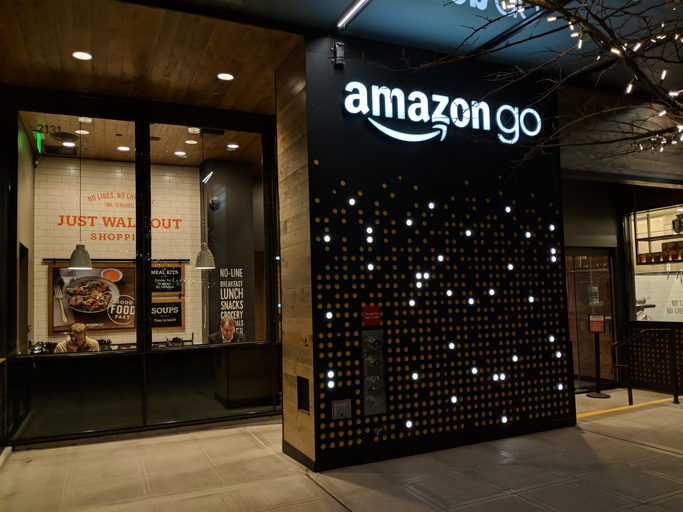Editor’s note: Based in Denver, Cassandra McNeill is senior manager, content marketing, at market research firm GutCheck.
It’s hard to know just how far and wide emerging consumer trends were actually adopted by retailers and CPG brands this year (Forget cashiers; scan your smartphone at the door!). While some trends are fun to think about, they didn’t (and won’t) materialize without serious market research behind them. In the cultural supercollider where MR lives, researchers not only have to brace for but anticipate the impact of many competing interests, influences and technologies on the industries and companies they serve.
More importantly, they have to know how to use the newest disruptive technologies and trends to their advantage so they can better understand consumer desires and expectations in a changing world, and how those desires and expectations translate to effective products, services and marketing.
Let’s look at some of the innovations from 2018 and what’s ahead for 2019 and beyond.
Innovations in 2018
Here are three innovations that have current and future implications for market research.
1. Augmented reality (AR): AR as a term and concept has been around for almost 30 years but AR in marketing and advertising hasn’t surfaced until the last decade or so. Some experts dubbed 2018 the year of AR, and whether or not it panned out to the degree predicted, AR is certainly having a mainstream moment. When Facebook enabled AR ads in the News Feed, makeup and fashion brands created ads that let a multitude of Facebook users (and potential customers) try out their products right then and there.
Future implications: Because consumers seem to delight in AR, even if they’re not quite sure how it works, market researchers can put more resources into studying the effectiveness of AR advertising and how it seeds brand loyalty. But they could also use AR themselves to reach consumers in more impactful ways. For example, a focus group that can see, touch and interact with a visual overlay might engage in a discussion in a deeper way, leading to more detailed and nuanced perceptions around market trends or specific brands, products and services.
 2. Automated everything: Automation, the topic de notre temps, has made inroads into every aspect of the consumer journey. Companies are now creating retail apps and in-store experiences, like the employee-less Amazon Go in Seattle, that take care of all the time-sucking processes customers would rather not bother with – from finding and buying a product to delivery to creating wish lists for future purchases – all requiring as few human interactions, decisions and clicks as possible, if any at all.
2. Automated everything: Automation, the topic de notre temps, has made inroads into every aspect of the consumer journey. Companies are now creating retail apps and in-store experiences, like the employee-less Amazon Go in Seattle, that take care of all the time-sucking processes customers would rather not bother with – from finding and buying a product to delivery to creating wish lists for future purchases – all requiring as few human interactions, decisions and clicks as possible, if any at all.
Future implications: As convenience continues to drive consumer behavior, market researchers have a greater opportunity to interpret and predict future behaviors and trends because of the enormous amount of consumer data generated by automated processes and machine learning. Information revealed about customer segments, individual buyers, pricing and the impact of promotions and ad campaigns fuels predictive and prescriptive analytics.
3. Adaptable products and services: Buyer’s remorse? Not anymore. Products and services that can adapt to a consumer’s changing whims or circumstances made more headway this year, perhaps taking a cue from Tesla’s software upgrades that remotely boosted the battery capacity for owners who were trying to get out of the path of Hurricane Irma in 2017. Having a product that can adapt to shifting needs and expectations may become more common across many industry verticals.
Future implications: Standing out from the competition and earning brand loyalty is nearly impossible these days without some level of customer personalization. Marketing researchers can look at how products or services can self-adapt to not only satisfy existing demands for personalization but to surprise and delight consumers who find themselves in different or challenging circumstances.
That was this year. What’s on the horizon?

Looking ahead
So what marketing research trends can we expect in 2019? As you may have guessed, data still takes center stage. Expect these three trends to take off in a major way.
1. First to scale: Marketing leader McKinsey uses this term to illustrate the trifecta of finding “high-potential ideas,” observing how consumer behaviors are changing, then diving into an opportunity before anyone else. As explained in their recent article: “We evaluated 25 high-growth categories in four countries across North and South America, Asia and Europe. In each, the players who took this approach are winning about 60 to 80 percent of the time; in the U.S., they win the highest market share 80 percent of the time.” To do this effectively, data integration is key: breaking down silos of information between sales, customer service, marketing and other business units to collect, combine into one location, analyze and apply data across the business as a whole. The result is that marketing researchers can identify those high-potential ideas faster and easier to be able to get out in front of them.
2. Audience receptivity: Agile market research has target audiences down. Researchers know how to recruit customers who fit specific demographics and profiles and mobilize them efficiently. But very different from audience targeting is the concept of audience receptivity. In his AdAge article, Liam Brennan, global digital director at MediaCom, says, “Grouping online audiences by demo produces very narrow targets that do not necessarily represent a brand’s most productive audience.” What he advocates for instead is going after “new growth audiences” by finding out if consumers have demonstrated a behavior, an emotion or a moment (such as a particular life event) that indicates relevance to a product or resonance with a brand’s messages. With the ubiquity of big data and widespread availability of analysis tools, the potential to tap into audience receptivity is significant.
3. Personality profiling: Related to audience receptivity is the ability to form a far richer understanding of consumer behavior based on personality. Results of consumer surveys can be combined with a scan of big data sources such as social media posts, friend networks, past purchases, likes, videos watched and other indicators of character and mood to understand deeply individual triggers, barriers, worries, intentions, attitudes and habits. Instead of going after a broad demographic, market researchers can use this highly specific insight to cater new product launches, revamped products or marketing campaigns to the specific personality profiles of the most viable buyer segments. However, brands must remember the great responsibility they have to protect consumers and their data from misuse or harm. When done right, smart marketers can surprise and delight consumers with products and services that fit their lifestyles, needs and passions.
The consumer and the brand
The theme for marketing research continues to revolve around data and personalization. It’s about figuring out how to foster relationships between the consumer and the brand that go a layer (or several) deeper into what truly makes a consumer tick and can keep them engaged throughout life’s twists and turns – just as a human connection would provide.
